6 Famous Restaurant Dishes With Misleading Origins (Looking at You, Caesar Salad)
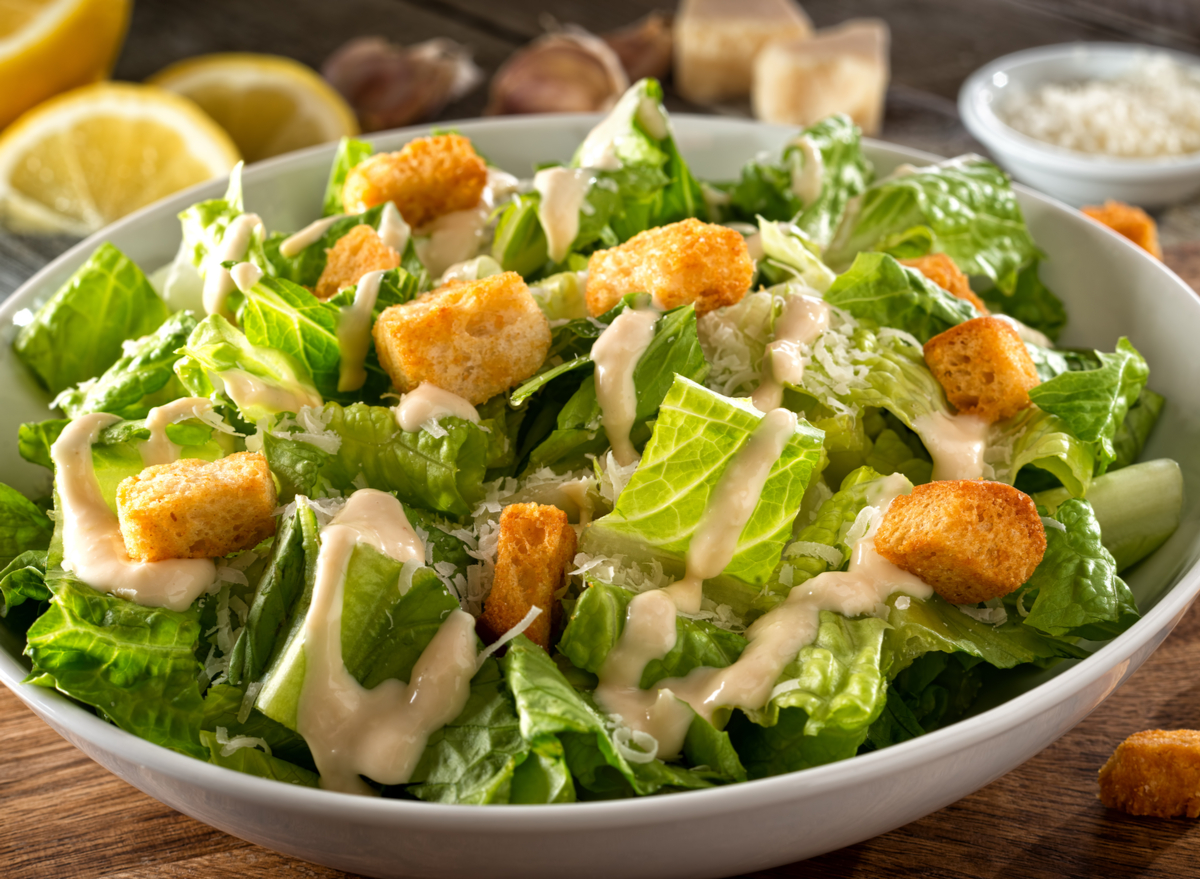
The origins of famous restaurant dishes are sometimes quite obvious, as in the case of Buffalo sauce, which was invented in Buffalo, N.Y. Or, Boston Cream Pie, invented at the Omni Parker House in, you guessed it, Boston. But some foods have cloudier pasts or we take their place of origin to be a given, when in fact it is not so clear.
Restaurants are innovative places, and naturally many of our favorite foods were dreamt up in one, usually by accident or due to a pressing need. Hungry people need to be fed after all, even when a key ingredient is missing. These six foods that we’ve all likely had and loved—except, maybe, the highly polarizing Hawaiian Pizza—are from restaurants in locations you would never expect.
Caesar Salad
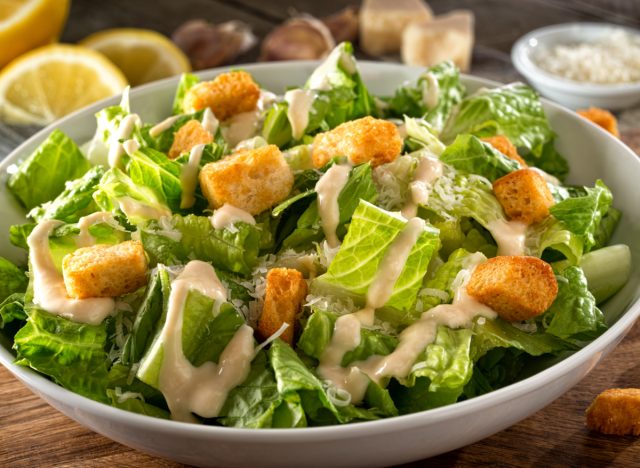
You might expect this classic salad, served in restaurants all over the world, to have an Italian origin, given its name. But, no, the Caesar salad was invented south of the border in Tijuana, Mexico. And, we have Prohibition to thank for it.
Italian restauranteur Caesar Cardini moved his restaurant, Caesar’s, from San Diego, California to Mexico in order to be able to serve alcohol in 1924. As is the case with many new food inventions, Caesar (or his brother, according to some sources) ran out of ingredients for a salad on the menu so he threw together the components that became the Caesar salad: romaine lettuce, Parmesan cheese, lemons, bread cubes, olive oil, eggs, and Worcestershire sauce.
What, no anchovies? There are some origin stories that say the polarizing ingredient was in the original recipe and others that say it wasn’t. So feel free to leave anchovies out if you are so inclined and use Worcestershire sauce instead, but, fun fact, the popular condiment contains the little salty fish too.
Authentic Caesar salads are always prepared tableside, just like the original, to make it seem all the more special, and because it’s best consumed fresh considering the use of raw eggs. Head to Tijuana for the original which is still tossed tableside at Caesar’s.
Hawaiian Pizza
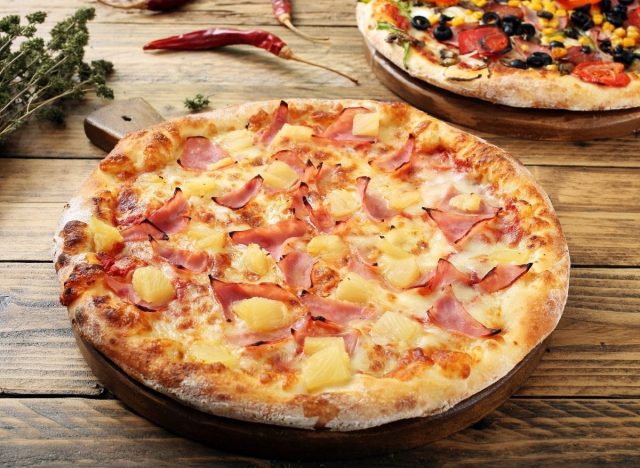
It’s time to stop blaming Hawaiians for Hawaiian pizza. This pineapple- and ham-topped pie is not actually from anywhere near Hawaii. It was created in Canada by a Greek immigrant and restauranteur named Sotirios Panopoulos who owned the Satellite Restaurant in Chatham, Ontario.
Little did Panopoulos know that his unique salty/sweet combo—which was inspired by the flavors the Chinese-Canadian chef was using in the restaurant—would become so divisive. The pie is actually named after the brand of canned pineapple that was used at the Satellite Restaurant and has nothing to do with the sun-drenched state.
California Roll
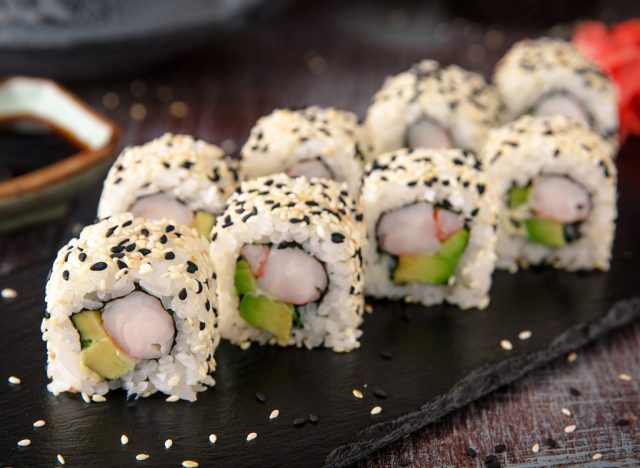
The California Roll was created in the Sunshine State, right? Wrong! This is another fan-favorite in the U.S. that was created in Canada. A sushi chef named Hidekazu Tojo dreamt up the idea of the imitation crab meat roll with avocado and cucumber as a gateway food to sushi for wary Canadians. Tojo said in interviews that Canadians in the ’70s didn’t want to eat the rolls with the seaweed outside, so he hid it inside and used cooked fish.
The chef is also credited with inventing the BC, Rainbow, and Spider Rolls. You can still visit the legendary Tojo’s in Vancouver and see what else Chef Tojo has whipped up in his 25 years in business.
Red Velvet Cake
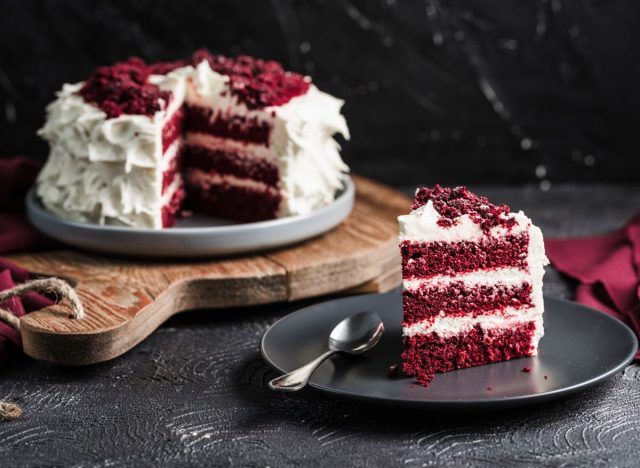
One thing’s for sure, red velvet cake is famous. If you search for red velvet creations you’ll find everything from coffee drinks, chocolate, and vodka, to cosmetics and lotions. The thing that isn’t 100% certain is the origin of this cake. While the velvet cake style, which was made with cocoa to give the cake a smoother texture, actually dates back to the Victorian era the origin of the red velvet cake has been disputed.
The cake is so ubiquitous in the South, according to Southern Living, that you’d probably safely assume that the cake was born there. But that isn’t the case. The closest we have to the actual story is that a foodie salesman tasted the cake at the Waldorf Astoria in New York City and loved it so much that he used the recipe to promote his company’s red dye. He printed the gorgeous recipe and sold it with his dye, bottles of vanilla, and artificial butter flavoring in the 1940s when butter was rationed due to World War II. The striking cake went on to win cooking competitions across the country.
Frozen margarita
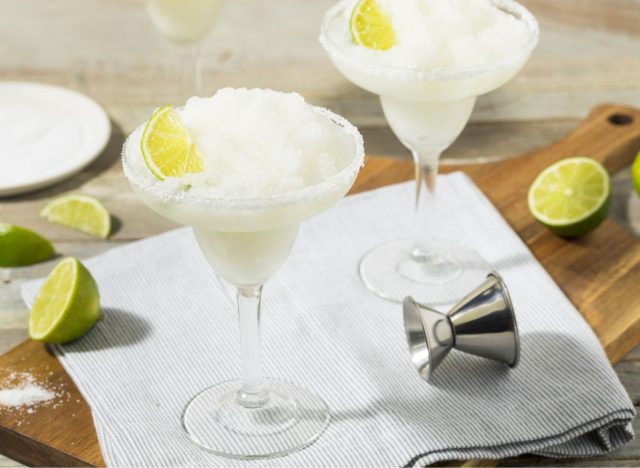
Perhaps you’ve never really thought about where a frozen margarita comes from, you’re just happy to enjoy one. While the origins of the original margarita vary, the smooth frozen machine-made margarita has a clearer past, and it isn’t Mexico or Jimmy Buffet’s kitchen in Key West, but the bustling city of Dallas, Texas.
The inspiration for the frozen margarita machine came—as so many other ideas do—out of necessity. When restauranteur Mariano Martinez’s popular spot Mariano’s Mexican Cuisine became inundated with frozen margarita orders, consistency became a real problem. One morning, as the story goes, Martinez spied a 7-Eleven Slurpee machine and knew it was the solution. While 7-Eleven wouldn’t sell one of its prized machines, Martinex repurposed a soft-serve machine and the magical happy hour treat was born.
Chicken Tikka Masala
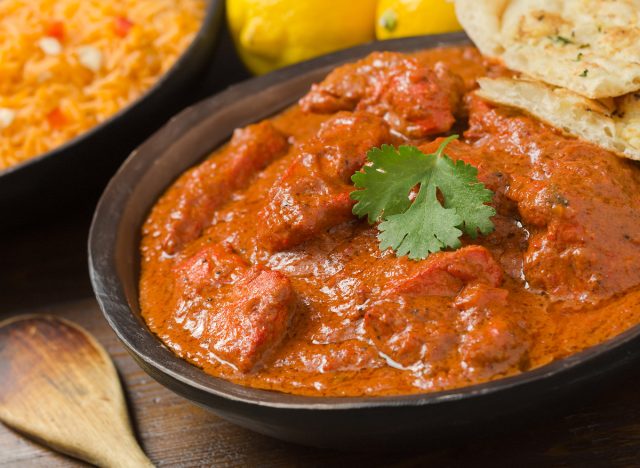
Chicken Tikka Masala is from India, right? An Indian chef most likely invented the saucy chicken dish, but it was either in England or in Scotland, according to different legends.
The most popular story is that Ali Ahmed Aslam of Shish Mahal restaurant in Glasgow, used condensed tomato soup and spices to soak chicken that a customer complained was too dry. So it was another case of creating a dish on the fly to satisfy a customer.
Either way, it is not an ancient dish, it’s probably only 50-ish years old, and it is a variation on butter chicken or murgh makhani. In the end, there really isn’t that much of a difference between the two dishes, which are both spiced tomato sauce-based chicken dishes. However, recognizing the dish as Scottish was important to one member of Parliament who petitioned for Chicken Tikka Masala to receive EU Protected Designation of Origin status in 2009.








